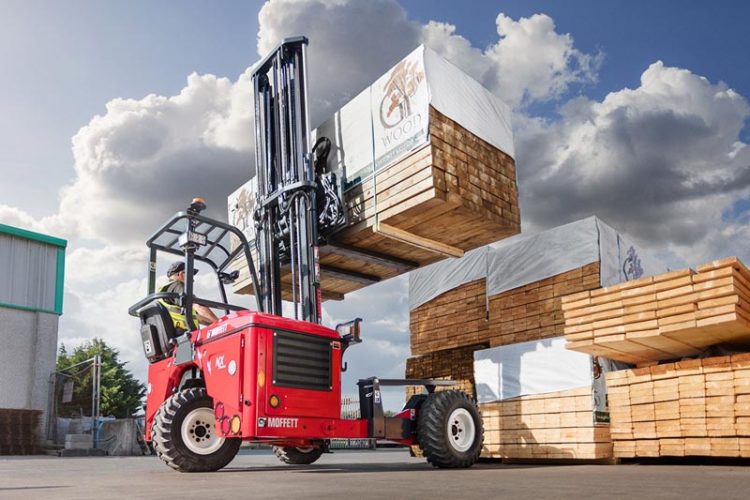Moffett Equipment
When you set out to hunt for a forklift, you need to know about various elements that help its proper function. Forklifts all depend on the hydraulic fluid for their efficient steering and lifting abilities. In any forklift model, hydraulics is more like the “lifeblood” of the vehicle. Note that without the hydraulic fluid in your Moffett equipment, you are increasing the risks and chances of your equipment meeting a complete breakdown.
Regardless of whether you plan your forklift to lift 20,000 lbs. or even just a minimum weight of about 1,000 lbs for your warehouse business operations, a proper lift truck relies on the amount of hydraulic fluid to offer the best production. Keep in mind that an inadequate level of hydraulic fluid will decrease the functionality of your forklift’s steering and lifting ability. On the other hand, an overabundance of the hydraulic fluid may lead to spills, leaks, leading to environmental, and safety dangers.
As you read on below, you will learn about everything that there is to know about checking and filling the hydraulic liquid of your Moffett equipment properly.
What’s The Function of the Hydraulic Fluid in a Forklift?
The main function of the hydraulic fluid is to supply and provide the transmission of energy through the system. This unique fluid helps the engine to work and provides the motion the vehicle needs to proceed with various tasks. In addition, hydraulic fluids also play a role in lubrication, contamination control, and heat transfer. The main function of the hydraulic fluid is to convey the right amount of power and this is a major reason why these fluids are in use for several equipment and machinery.
To answer this question of the function of the fluid, in most lift trucks, you should know they have sump tank integrations into the frame. Since the fluids heat up by resistance right from the system, the unique design enables the frame to serve as a heat sink as well as a cooling system. The entire truck then draws the heat in the oil.
The pump then produces a constant and an even flow of the fluid to supply all the control valves. When you go to dealers such as Moffett Truck, and search for the best quality trucks, you will learn that most forklifts use a special gear like a pump. This consists of a pair of gears, rotating and meshing, which pushes the hydraulic fluid in an opposite direction for their rotation.
In a forklift, the control valve is more like the brain of the entire system, which controls the movement of the fluid, and its direction with the use of spools. It controls the fluid amount directed into a line of the system. The relief valve helps to protect the system in the case of overload of pressure or other troubles. As an example, when a cylinder then reaches the end of its travel, the pressure in the system will then rise. When this happens the spring-loaded relief valves then sense some excessive build up of pressure and opens up, allowing the oil to then flow back into the sump of the forklift. An electric forklift usually has two hydraulic pumps, the first for upright lift, auxiliary, and tilt, plus a separate pump for the power steering cylinder.
Filling Hydraulic Fluid in Your Lift Truck:
In regards to filling the hydraulic fluid in your forklift, some procedures and steps are vital for you to follow. It is advisable that you fill your forklift on a routine basis to help maintain the equipment in the days to come ahead. The main steps include:
- Go through the Operators Manual: When operating a forklift, it is recommendable that you replace the hydraulic fluid every 1,000 hours of its use. However, you can consult the operator’s manual if you have it with you. This should help to provide the specific hydraulic fluid grade needed for the particular forklift you own as well as the fill level of the fluid tank.
- The Reservoir: You should open the hood and try to locate the hydraulic reservoir. Usually, it has a vented fill cap along with a fill gauge or sight class on its side, which helps to indicate the level of the fluid.
- Proper Parking: Before you proceed, ensure you park the forklift on the ground level and not at an inclined angle. If not, this can run the risks of the hydraulic fluid leaking and your forklift rolling, accidently. If parking the lift truck on ground level is not easy for you, you should chock the wheels in order to prevent the lift truck from becoming loose. You should lower the lift trucks until they finally touch the ground, turn the ignition off, and set the parking brake.
- Provide the Hydraulic Fluid: you should then remove the vented fill cap, finally insert the fluid into the tube, and begin with the pumping of the fluid into the reservoir.
- Check the Levels: Note that this is a vital step. You have to keep your eyes on the level of the fluid through the sight glass or the fill gauge. This gauge helps to provide the right capacity of the oil for the forklift. When the fluid reaches its maximum line, you should stop pumping.
The final step is to withdraw the pump and remove the fill nozzle slowly. Use a towel for the cleanup of fluid spills outside the tank and replace the cap. Tighten it, close the lid and you have filled the hydraulic fluid properly of our lift truck.













